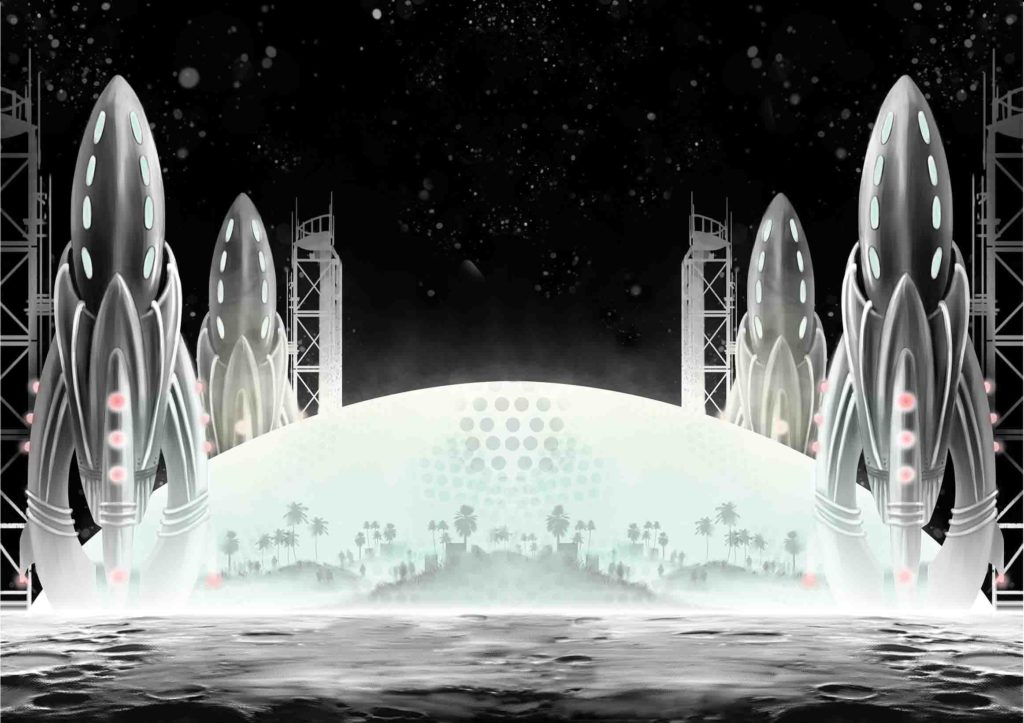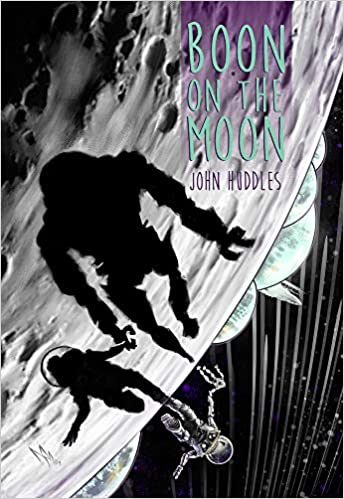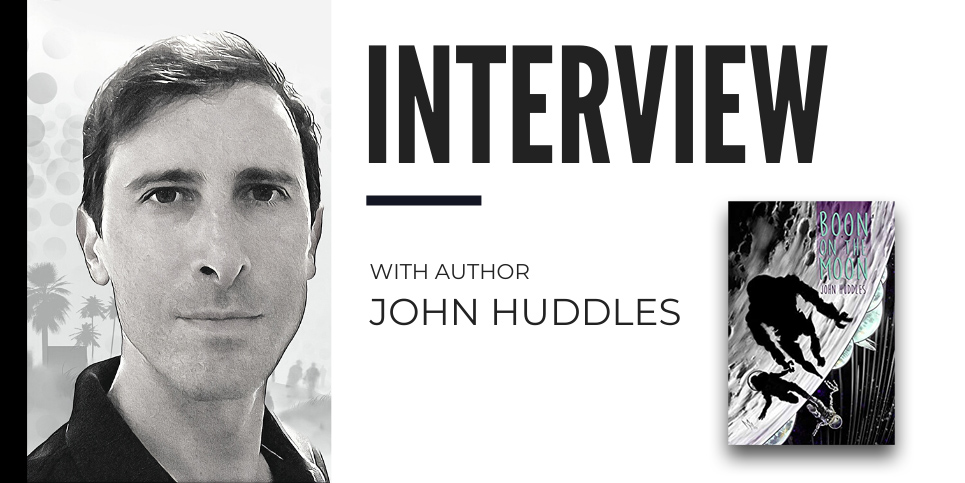The Children’s Book Review in partnership with Notable Kids Publishing
John Huddles is a Los Angeles-based screenwriter and director. Filmmaker Magazine called his sci-fi thriller, The Philosophers, an “adventure film of ideas” … “sneakily beautiful” with “bravura fantasy sequences.” In Boon On The Moon, the first book from The Booniverse, John extends his love of sci-fi/fantasy into storytelling for the page instead of the screen. We chatted with him about the story, his writing process, and the entertaining characters. Read on!
We’d love to hear the inspiration behind your sci-fi space adventure novel for kids, Boon on the Moon.
John Huddles: Space, danger, and snacking. My favorite three-ingredient recipe.
Boon on the Moon is a well-plotted sci-fi novel that feels authentically futuristic and will surely appeal to space-obsessed kiddos and those that love an exhilarating adventure. Who would you say is the ideal audience for your book?
In storytelling for kids, you can’t hide behind literary fashion. Kids either like what you’ve written or they don’t. It’s an equation as rock-solid as E=MC2. I’ve been enjoying the binary nature of the challenge.
The novel is set in both Arizona and on the Moon. Do you have personal connections to either place? Why Arizona and the Moon?
I haven’t been to either place, but I’d like to visit both.

Equal parts imaginative and informative, you’ve managed to pack the story with something for everyone with a wide range of concepts and themes: humor, adventure, danger, a little romance, science, philosophy, and fireworks. Did you plot and plan the story to include most of these storytelling elements? Or did they find their way into the tale as you wrote?
The elements you name are the ones that I personally enjoy. Anything that I write will probably come out this way for better or worse. And as a result of having made a sci-fi/adventure film for teenagers (called “The Philosophers”), I’m unshakably convinced that kids’ brains are receptive to complexity—in theme, plot, content overall. Even kids younger than teens are open to exploring more elaborate ideas and fictive structures than they’re usually given credit for.
Can you tell us more about the emphasis on the ‘imagination versus information’ theme throughout the story?
Well, they’re both key ingredients to problem-solving in life, the only question is getting the ratio right. That’s Byron’s challenge.
The relationship between almost ten-year-old Byron and his goody-two-shoes and know-it-all robot is so fun. Was their back-and-forth banter one of your favorite parts to write?
It was absolutely my favorite part to write. Banter like theirs is rivalry on one side of the coin, but sympathy on the other. That makes it both fun and meaningful, which is the most rewarding material to try to come up with.
Byron’s girl-crazy brother Taji adds another element of pizzaz to the story. Will you tell us a little bit about how you settled on his backstory?
Taji is the opposite of Byron in lots of ways: “as different as chocolate and broccoli,” artist and scientist, tall and short. But the brothers already know they’ll be friends for life—that’s what I like about their relationship.
As you are a screenwriter and director, how would you say this work experience helped your creative process in writing Boon on the Moon?
Scriptwriting concentrates the mind on the essentials: character, plot, dialogue. If you practice it enough, you learn the editorial skill to boil down a story to its core assets. For me there’s been value in transferring this process to fiction writing. Also, once that part of the process is done, it’s then easier to see where there’s room to perambulate.
With the boy-robot combo, are you a Lost in Space fan? If so, have you watched the recent Netflix series? If not, maybe you could share some of your favorite space-related books and movies?
I did watch and like “Lost In Space” in re-runs as a kid. But as you know that boy-robot pairing was very congenial. With Byron and José Ignacio I wasn’t thinking boy/robot so much as boy/best-friend-slash-frenemy. José Ignacio is more a boy himself than a mechanical creature, albeit in a robot’s framework.
My favorite all-time space movie is the first “Star Wars” (not a very original choice, I’m afraid) and my favorite space book is “Dune” (also not a shocking choice).
Is there anything else you’d like to share with us about Boon on the Moon, your writing, or yourself?
I’m looking forward to sharing Byron’s continuing space-adventures. In “Boon On The Moon” Byron had to save the Earth from destruction. In his next adventure, Byron has to save the galaxy from the end of snacking. It’s a big job.
For more information, visit https://www.boononthemoon.space/chronicle.
 Boon on the Moon
Boon on the Moon
Written by John Huddles
Publisher’s Synopsis: When ten-year-old Byron “Boon” Barnett boards a rocket-ship for a move to the Moon with his family (and his irritating robot, Jose Ignacio), he’s expecting the time of his life in the lunar colony of Cosmopolis. What he’s not expecting is a stellar disaster that’ll demolish Cosmopolis before lunch. Boon insists he knows how to survive it, but people tend not to believe him about stuff. His parents have been lecturing him on the dividing line between using his imagination for fun and using it as an excuse for bad behavior. Suddenly it’s the dividing line between life and death.
“Boon on the Moon is a well-plotted sci-fi novel that feels authentically futuristic and will surely appeal to space-obsessed kiddos and those that love an exhilarating adventure.” — The Children’s Book Review
Ages 9-12 | Publisher: Notable Kids Publishing | ISBN: 978-0997085181
Buy the Book
This interview—John Huddles Discusses Boon on the Moon—was conducted between John Huddles and Bianca Schulze. For similar books and articles, follow along with our content tagged with Books about the Moon, Middle Grade Books, Science Fiction, Space Exploration, and Space Travel.

